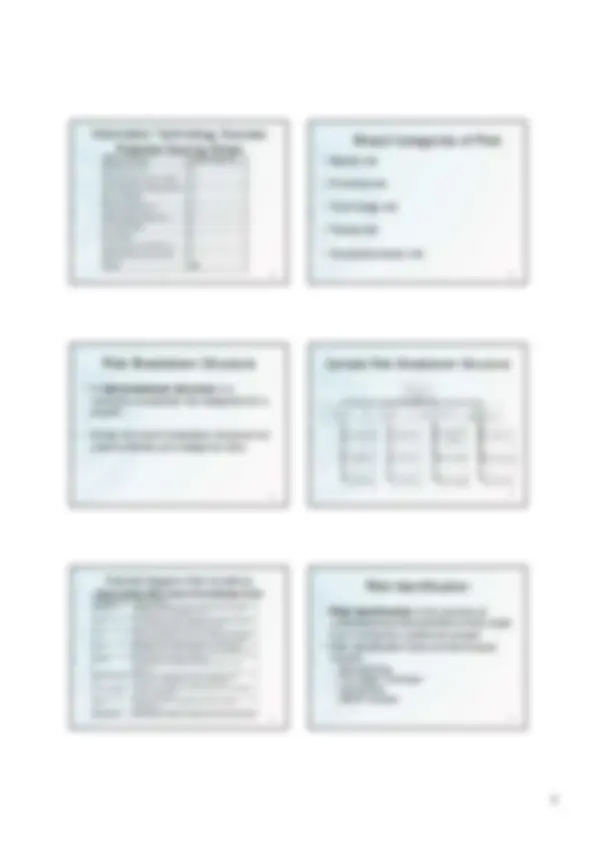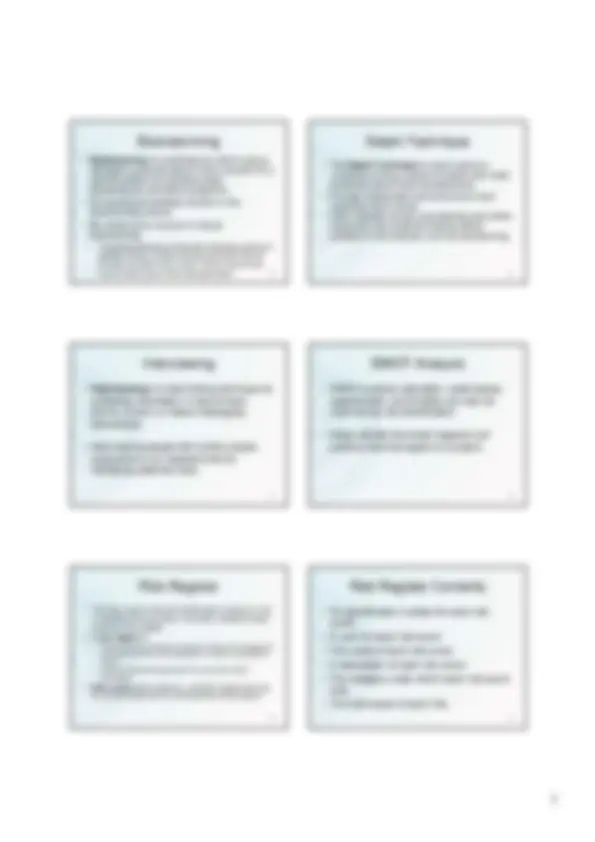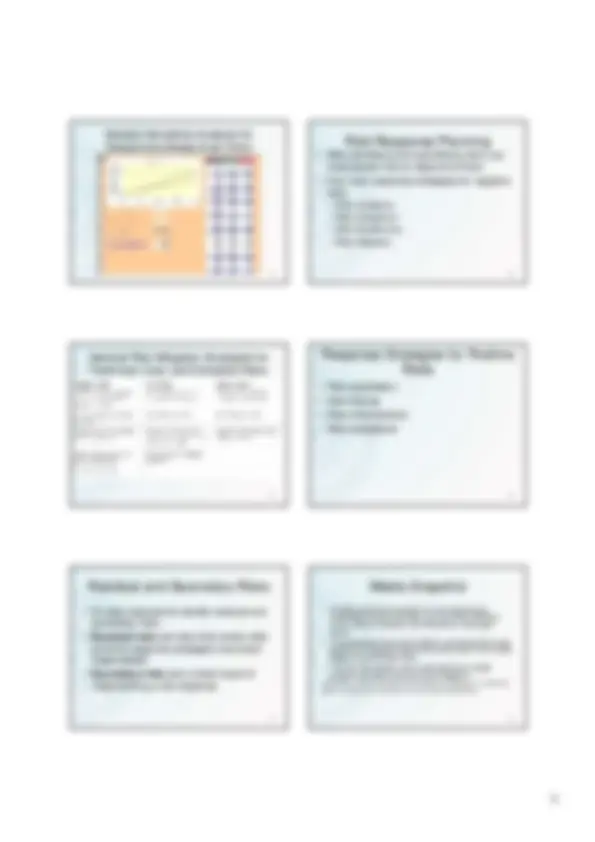








Study with the several resources on Docsity

Earn points by helping other students or get them with a premium plan


Prepare for your exams
Study with the several resources on Docsity

Earn points to download
Earn points by helping other students or get them with a premium plan
Community
Ask the community for help and clear up your study doubts
Discover the best universities in your country according to Docsity users
Free resources
Download our free guides on studying techniques, anxiety management strategies, and thesis advice from Docsity tutors
This document about Project Risk Management, The Importance of Project Risk Management, Benefits from Software Risk Management Practices, Risk Can Be Positive, Negative Risk, Risk Utility.
Typology: Lecture notes
1 / 11

This page cannot be seen from the preview
Don't miss anything!







2
3
4
5
6
7
KEY: 1 = LOWEST MATURITY RATING 5 = HIGHEST MATURITY RATING
Procurement 3.33 3.01 2.91 3.
Risk 2.93 2.87 2.75 2.
Communication 3.53 3.53 3.21 3. s
Human 3.18 3.20 2.93 3. Resources
Quality 2.91 3.22 2.88 3.
Cost 3.74 3.22 3.20 3.
Time 3.55 3.41 3.03 3.
Scope 3.52 3.45 3.25 3.
Hi-Tech Manufacturing Informati on Systems
Telecommunicatio ns Engineering/ Knowledge Construction Area
*Ibbs, C. William and Young Hoon Kwak. “Assessing Project Management Maturity,” Project Management Journal (March 2000). 8
80% 60% 47% 47% (^) 43% 35% 6% 0%
20%
40%
60%
80%
100%
Anticipate/avoid problems
Prevent surprises Improve ability to negotiate Meet customer commitments
Reduce schedule slips^ Reduce cost overruns
None
*Kulik, Peter and Catherine Weber, “Software Risk Management Practices – 2001,” KLCI Research Group (August 2001).
9
10
11
19
Success Criterion Relative Importance User Involvement 19 Executive Management support 16 Clear Statement of Requirements 15 Proper Planning 11 Realistic Expectations 10 Smaller Project Milestones 9 Competent Staff 8 Ownership 6 Clear Visions and Objectives 3 Hard-Working, Focused Staff 3 Total 100 20
21
22
IT Project
Business Technical Organizational (^) ManagementProject
Competitors
Suppliers
Cash flow
Hardware
Software
Network
Executive support
User support
Team support
Estimates
Communication
Resources
23
Knowledge Area Risk Conditions Integration Inadequate planning; poor resource allocation; poor integration management; lack of post-project review Scope Poor definition of scope or work packages; incomplete definition of quality requirements; inadequate scope control Time Errors in estimating time or resource availability; poor allocation and management of float; early release of competitive products Cost Estimating errors; inadequate productivity, cost, change, or contingency control; poor maintenance, security, purchasing, etc. Quality Poor attitude toward quality; substandard design/materials/workmanship; inadequate quality assurance program Human Resources Poor conflict management; poor project organization and definition of responsibilities; absence of leadership Communications Carelessness in planning or communicating; lack of consultation with key stakeholders Risk Ignoring risk; unclear assignment of risk; poor insurance management Procurement Unenforceable conditions or contract clauses; adversarial relations 24
25
27
28
29
30
37
38
39
Monthly Ranking Risk Item This Month
Last Month
Number of Months
Risk Resolution Progress Inadequate planning
1 2 4 Working on revising the entire project plan Poor definition of scope
2 3 3 Holding meetings with project customer and sponsor to clarify scope Absence of leadership
3 1 2 Just assigned a new project manager to lead the project after old one quit Poor cost estimates
4 4 3 Revising cost estimates
Poor time estimates
5 5 3 Revising schedule estimates (^40)
41
42
43
44
45
46
s
47
49
50
51
52
53
54
55
56
57
58